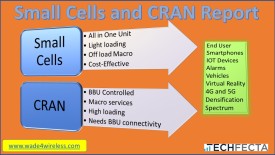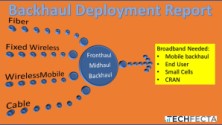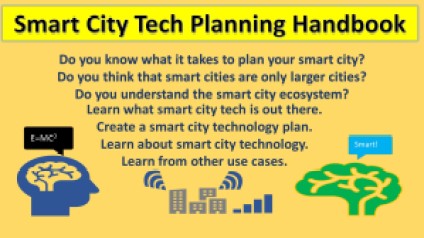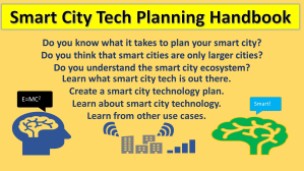The CAF, Connect America Fund. Brought to you by the FCC! WOW! A fund to help subsidize the growth of the rural areas in the USA so that we may have broadband everywhere. While most people are not in favor of the tax money being used for this, I think it’s good for the industry. Yes, anything to help people deploy more broadband to spark the economy in those areas without broadband can be seen as a good thing. It’s not a new idea, but maybe now we can break the barriers that stopped us before, like budgets. I support growth and bringing high-speed wireless affordable internet to all. While you may not think about this if you’re in an urban or suburban area, I was raised in a very rural farming community. For them to get internet access is huge.
For a list of products to support Wade4Wireless, click here!
To put the rural areas into perspective farmers are on the cutting edge of technology. They are constantly looking for better yields from their crops. That means that they are looking at everything from weather patterns, soil moisture, pests, and so on. Not only that but they also have tractors that can tun themselves using GPS tracking, yes, self-driving tractors. Did I mention that they also track their animals? You get the picture. Now you have one farmer, using wireless, data, and GPS to track pest, weather, herds, and their self-driving vehicles in the fields. Farming got high-tech, and most of you didn’t realize it. It’s where all the technologies meet, and big data is crucial.
Now, what about all the smart people that are in rural areas that may need broadband? Now they have the opportunity thanks to these grants. Schoolkids that have to be at school for internet access. A business that has to reside in town may not be able to work remote or from home. You may not want to work from home, but you know this is how it’s done today. FYI, farmers work from home.
Winners must deploy service to locations in the CBG – 40% of the number of locations by year 3 – Additional 20% in each subsequent year – 100% of locations by year 6 – Measured at the state level
Data on locations served filed with USAC • Rates must be reasonably comparable to rates for similar services in urban areas.
So, now let’s look over the winners of the auction, not the companies, but the technologies that are going to be used. If you want a list of companies, the links are below. I think we need to figure out how the technologies are going to be used and I may mention the companies will use them.
Technologies:
- Optical/Fiber – OK, we have all seen this play out This time the government is helping to foot the bill. If you look at many of this winners, this is only a partial solution. They also mix it with fixed wireless, which makes a lot of sense. The thing is, it is very expensive to run fiber across the rural areas, so if the government helps pay for that, I see it as a good thing because it will open up so many new doors. The fiber is essential to the backbone for broadband in those areas. Once someone runs the first fiber run, then others can jump on it or have a model to work with. The carriers have been running fiber to a rural area when it becomes cost-effective, although they still use the microwave in many of those areas. They probably find it cost-effective, but the need is going to outweigh the cost at some point. I am so happy that some have signed up to do this. The list starts here (taken for the FierceWireless Article listed in the resources section) :

- Rural Electric Cooperative – fiber to the end-user, $186K to cover 66,322 locations,
- Benton Ridge Telephone Company – fiber to the end-user and fixed wireless, $52K to cover 23,957 locations,
- Midcontinent Communications – fiber to the end-user and fixed wireless, $39K to cover 9,371 locations,
- Wilkes Telephone Membership Operation – fiber to the end-user and fixed wireless, $33K to cover 13,866 locations,
- Terrestrial fixed wireless – this is great, some companies are going to roll out fixed wireless of some kind. I hope it has enough bandwidth that many users can use it with efficiency and real broadband. Why do I say this? Because I have done a lot of fixed wireless ventures in the past using the ISM band. I saw the 928MHz roll out because they thought it would cut through vegetation, but the power was low, and the bandwidth limited. I’ve seen 2.4GHz rollout out with success, but the bandwidth was limited, and it usually has shared loading. I’ve seen 5.8GHz rolled out with limited success. All of these are license free but very low power and very limited in coverage, and the loading can cause problems. I would love to see the CBRS used effectively
 and maybe some of the mmwave. That is where I think we need to go. Unfortunately, unless you see Verizon, T-Mobile, or AT&T on the list, it probably won’t be mmwave. Again, that is where we want to go to make the broadband rollout effective with reasonable broadband. I thought maybe Sprint would have signed up for some of this, but nothing. Here is a list of the fixed wireless companies that I didn’t mention above.
and maybe some of the mmwave. That is where I think we need to go. Unfortunately, unless you see Verizon, T-Mobile, or AT&T on the list, it probably won’t be mmwave. Again, that is where we want to go to make the broadband rollout effective with reasonable broadband. I thought maybe Sprint would have signed up for some of this, but nothing. Here is a list of the fixed wireless companies that I didn’t mention above.
- Geostationary Satellite – this holds a place in my heart. I love satellite, but it has been so limited. Now, Hughes is talking about rolling out the LEO satellite system, which they talked about years ago. It’s going to be like is a cell site in the sky. LEO satellites are lower and constantly moving, you would need to connect to multiple satellites like you would cell sites. I love the model, and I hope someday it happens. Since this says geostationary satellites, keep in mind that they are very limited, super expensive to deploy, and fixed. I love satellite, but they have their limitations, and the payback is a very long time. At least that was the old model; I am not sure how it’s changed with more competition in the rocket companies. If they really plan to use geostationary and not the LEO satellites, then I hope they have line of sight to the sky, and the users can accept the dish on their roofs. It’s going to be the same old battle that users have always had. It’s great when you’re using a new bird, but the latency is high, and if it becomes loaded, everyone has to share the transponder. If you need something and you are literally in the middle of nowhere, it may be your only option and will work if you have no alternative. Who is doing this?
- ViaSat, Inc, $123K to cover 190,595 locations.
Whatever your preference, there should be opportunities here for the rural workers. These guys are going to try to do as much as they can within the budget. While it may look like a lot of money on the list, they have a lot of territories to cover. Most have permitting, regulations, and all the paperwork that has to happen as soon as they design something but before they deploy. It looks to be in their own territories, so they should be well prepared for the work coming their way. They also have to fulfill the commitment to the FCC to keep the money. That may sound easy, but they need proof that they did what they said they were going to do.
Normally I would say this will be a lot of work for the industry, but unless you already work with them, you may not get much. All we can do is offer our services and see who needs support. In my case, fixed wireless, massive MIMO, and small cell design. For you, fiber, IT, RF planning, and so on.
Deploy, deploy, deploy! It good for the industry and for the end-user!
Just remember, I am here to help at www.techfecta.com when you’re ready!
Resources:
- https://www.fcc.gov/reports-research/maps/caf2-auction903-results/
- https://www.nlc.org/sites/default/files/users/user167/CAF-Kirk-Burgee-FCC-.pdf
- https://www.telecompetitor.com/caf-ii-auction-winners-viasat-one-of-few-large-winners/
- https://www.fcc.gov/auction/903
- https://www.fiercewireless.com/wireless/here-are-top-100-winners-fcc-s-1-5b-caf-ii-auction
- https://www.ecnmag.com/news/2018/08/fcc-releases-winning-bidders-148b-caf-ii-auction
- https://www.fiercetelecom.com/special-report/at-t-frontier-others-accept-1-5b-caf-ii-funding-despite-fcc-s-changing-broadband
- https://www.rcrwireless.com/20180626/policy/fcc-approves-220-bidders-for-caf-auction-tag6
- https://www.fcc.gov/reports-research/maps/mobility-fund-ii-initial-eligible-areas-map/
Thank you for your support and your time. And good job on learning all you can in the wireless industry, you are amazing! Now, go out and impress people!
Do you want an occasional email with free PDFs of these reports along with book and training offers? Read posts like these offline!
Click here to sign up!
Be smart, be safe, and pay attention!
See Ya!
More products from TechFecta and Wade4Wireless that support WADE!
The foundations below do beautiful work, spreading love when all seems lost.
Climbers can get seriously injured and/or die on the job. Support the workers who build and install the wireless systems!
Together we can honor and remember the fallen in our wireless family.








 Putting together your smart city tech solutions, planning, development, and more…TechFecta! Guiding you to a better plan through consulting!
Putting together your smart city tech solutions, planning, development, and more…TechFecta! Guiding you to a better plan through consulting!



































